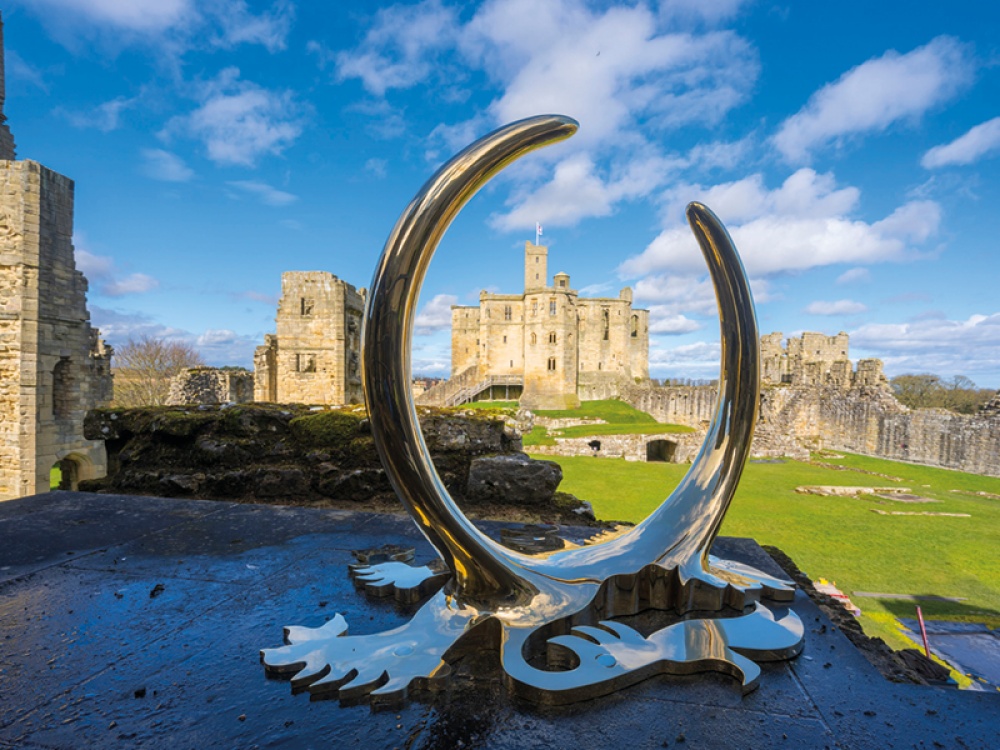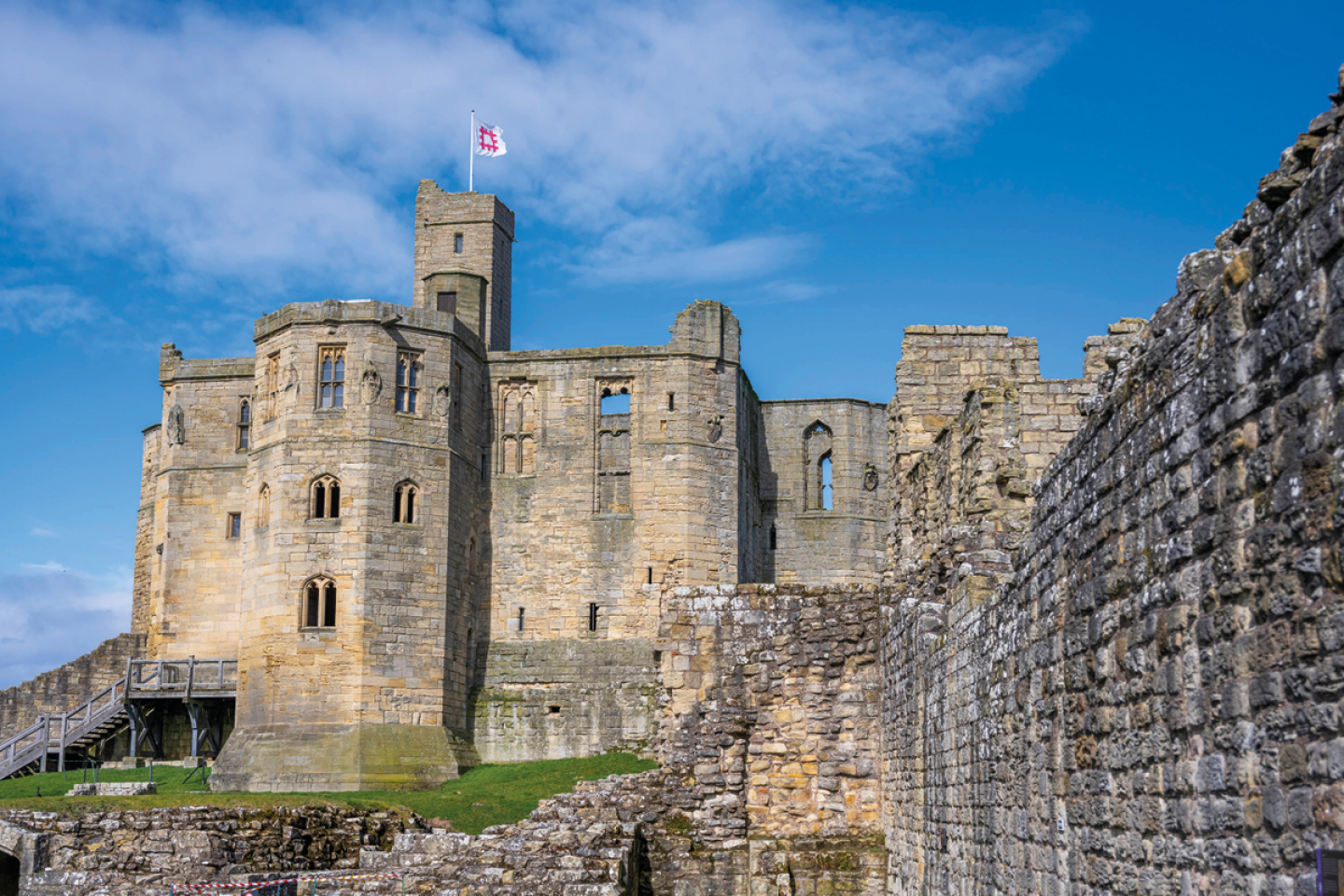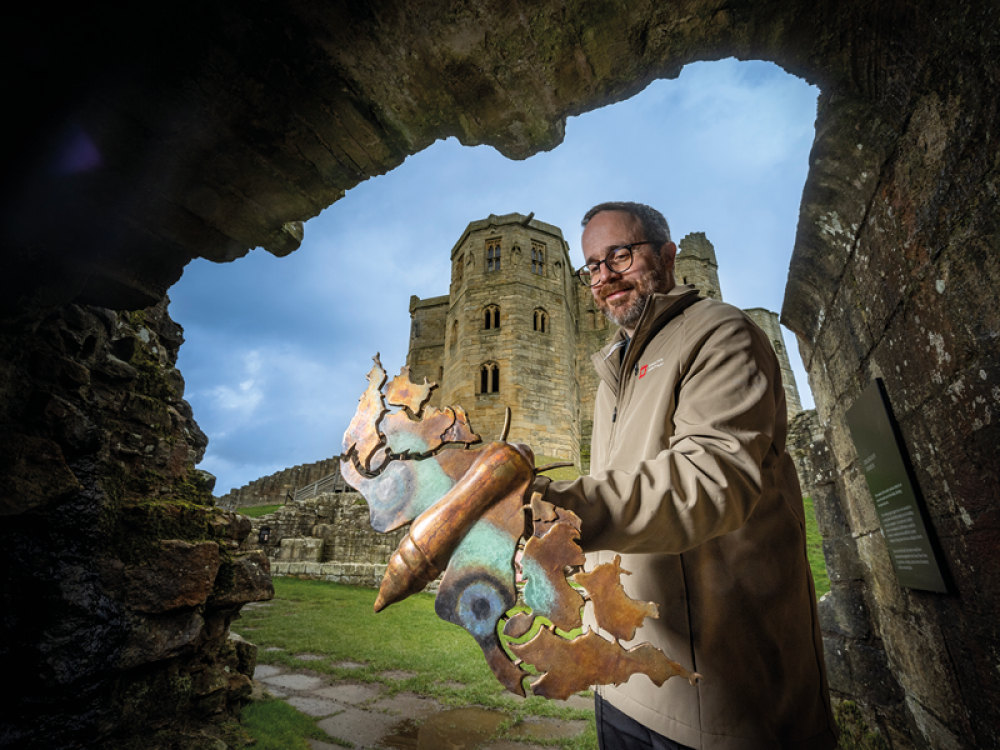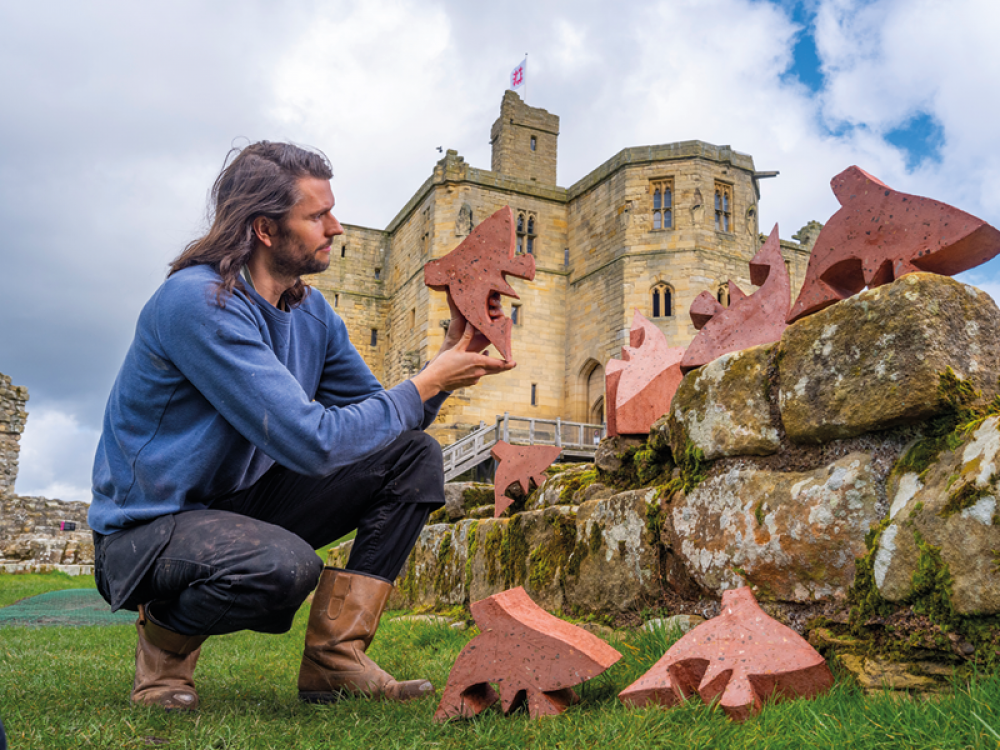See The Sculptures Forming Family Friendly Trails Around Warkworth Castle

A series of new sculptures form interactive trails to tell the tales of the 'ordinary' people who once called Warkworth Castle home
Warkworth Castle and Hermitage are an unusual pair of medieval monuments and the castle was the favoured residence of the Percy family between the 14th and 17th centuries. It’s beginnings are a little mysterious, but the first written record of Warkworth Castle dates between 1157 and 1164, when Henry II granted the castle and manor of Warkworth to Roger fitz Richard. Historians agree Roger’s son was almost certainly responsible for the present building (dating between 1199 and 1214) and many features visible today, including the gatehouse, Carrickfergus Tower, postern gate and east curtain wall, can be associated with that period.
From the late 13th century castles like Warkworth began to play an important role in the war between England and Scotland, and in 1327 Warkworth was besieged by the Scots. In 1332 the castle passed to Henry Percy, 2nd Lord Percy, while another Henry Percy, 1st Earl of Northumberland, is believed to have been responsible for building the great tower and establishing the hermitage. In 1405, following a quarrel with Harry Hotspur, Henry IV marched north and the Percy’s lands passed to the Crown. In the 1500s (with the castle back in Percy hands), the 6th Earl undertook several repairs on the castle, but he had no heirs so the castle passed to the Crown again, however the 6th Earl’s nephew, Thomas Percy, was later given control of the family estates.
A survey and inventory in 1574 shows that parts of the castle were already in ruin, but when the 9th Earl of Northumberland came into possession of Warkworth nine years later, some rooms were still habitable. During the Civil War, a garrison was installed and in the 1700s, renowned architect Anthony Salvin began restoring the castle’s great tower. In about 1752 the wall between the Montagu Tower and the gatehouse was demolished, but despite being mostly ruined, Warkworth Castle and Hermitage had already become an attraction for tourists.
Read More: 12 of the Best Spa Breaks in Yorkshire and the North East

It remains just as (if not more) popular amongst tourists today and visitors can explore the great tower, the bailey below it, the curtain wall, towers and gatehouse, and the hermitage. Earlier this year, English Heritage commissioned contemporary art installations to form part of a new series of interactive trails which tell the stories of people who lived in or near the castle in the 15th century. Now visitors to the castle are invited to choose their character, whether that’s Henry Percy of Atholl, Eleanor Neville (Countess of Northumberland), Widow Nawton, loyal soldier William Stowe or John del Warderobe to lead them around. Updated audio guides mean these characters will take you to all the nooks and crannies of the castle.
Will Wyeth is one of a number of historians who works for English Heritage. ‘Each of us have a specialism and my specialism is medieval castles,’ he says. ‘I spend my time, when English Heritage asks me to, doing research on specific castles or specific people in order to help with projects like this one at Warkworth. I find out about people’s lives and translate that into interesting facts and stories.’
Read More: The Best Places Across the North East for Afternoon Tea

Will says Warkworth Castle has ‘a long and, at times misunderstood, history’. ‘We see Warkworth as a fortress and a place of military conquest and that’s been the story of the castle from as far back as you can remember,’ he continues. ‘But what we wanted to try to do with this project is to change the perspective of that story, to make Warkworth less a thing of grim prisons and flaming arrows and more a place of life, colour and “ordinary” people – a place where warfare wasn’t the only thing going on. I think it would surprise most who visit, while castle life was different to how we live today, they might be surprised by how relatable these people are today.’
The idea for this project began before the pandemic. ‘We knew Warkworth was popular for visitors in the North East, and actually popular in the UK full stop. People want to go there because there’s so much space to run around, there are lots of nooks and crannies and circular routes to explore and a lot of the ruins, including the great tower at the top of the castle, are very well preserved,’ says Will. ‘What was missing at the castle was the story of “ordinary” folk, people like you and me – people who kept the castle running.
‘English Heritage is keen to surprise visitors when they come to its castles. Not to just talk about knights, kings and queens, but also to talk about the folk who, for example, brought the fish to the castle, made sure all the doors were locked, or made sure there weren’t lots of moth infestations (which was a persistent problem). Our mission with this project was to bring those people back into the castle. The most recent sculpture that has been added helps in making Warkworth more accessible for people who can’t get into the great tower for example. Earlier in the year, a reconstruction of the castle in its entirety in the 15th century (a model carved out of a single block of stone) was installed and that makes the castle ruins make more sense to visitors by showing how it looked in its heyday.’

Read More: Beach Breaks to Book When the Crowds Disperse
The whole process of design and manufacture of the sculptures was overseen by architects and designers at Wignall and Moore. Will shares the ideas behind the sculptures. ‘The sculptures aren’t just big versions of medieval objects, they take inspiration from medieval objects and expand on them,’ he explains. ‘They’re part creative, part factual and we’re deliberately playing with the idea of understanding the past through creativity as much as through fact. The sculptures include a large signet ring which demonstrated you were who you said you were, almost like a driving license for the aristocracy. There’s a moth with wings that are fragmented into the shape of England which was to be divided into three parts, representing a traitorous plot to kill the King (which is part of the story that’s told at the castle). There’s a fire made of reddish stones but if you look closely each flame is in the shape of a fish – it’s all about the angles from which you look at it. There’s a lock and key in the shape of a tower which is pretty cool, and the last item is in the great tower itself, in the chapel. It’s a branch of coral and if you get up close to it, it gives off the scent of a medieval church. These five sculptures do different things. For example you can turn the key in the lock and hear a short anecdote. While they’re all pieces of art, you can feel and touch them and get a real sense of what they represent.’
English Heritage hopes the way the stories are told will allow visitors to see the castle’s historic inhabitants in a new light. ‘We don’t talk about each of the characters corresponding to each of the sculptures, we don’t say for example the countess did this or did that. The countess is actually telling you, “I just got back from the church, I’m exhausted because I just had a baby, I need to get to my room but everyone keeps interrupting me. Join me as I try to get across the castle”. They’re telling their own stories. We hope visitors might be able to relate to these characters in some way. We really want them to have an emotional connection with the past – I think that’s a really powerful way to get people interested in the medieval period, well, all aspects of history to be honest.’
If you’ve never visited the castle, the first thing that’ll hit you is the sheer scale of it. ‘Visitors will see the odd sculpture or panel when they first walk in but a lot of it won’t be immediately visible because we want everyone to go and explore,’ Will says. ‘Visitors can expect to discover, not only what we all love about Warkworth, which is an adventure of warrens and hidden passageways, but also enjoy meeting people from a medieval past. I hope, because we’ve got so many characters and the new audio guide and there’s so much packed into the castle, that when they leave they’ll want to return. There’s so much to see and learn that I don’t think you could do it all in just one day. Definitely give it a go and see what you come away with, and hopefully the second time you’ll find another story to be told, which makes Warkworth one of the greatest castles in the North of England.’







